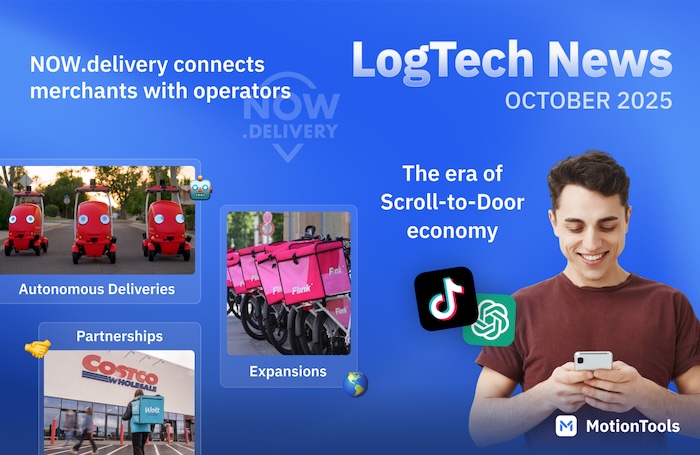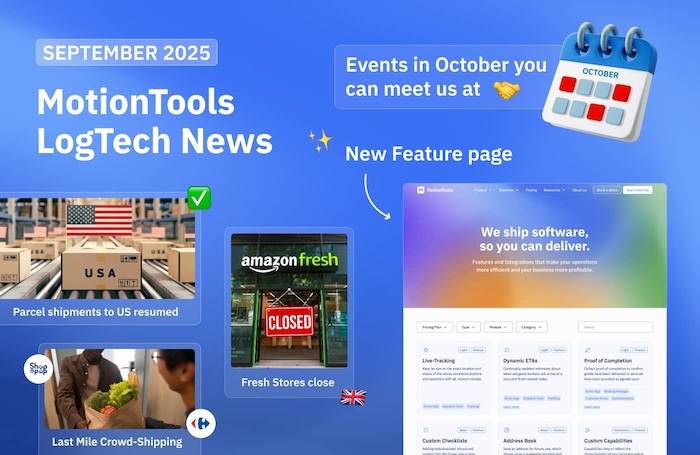During the last years on-demand delivery is experienced breakthrough growth all around the world. In societies demobilized by the pandemic, people are finding themselves in a new normal of convenient commerce. Enticed with marketing campaigns from dozens of emerging instant delivery services, consumers are invited to embrace a growing variety of order-to-home options from groceries to pharmaceuticals at innovative delivery speeds.
On an industry perspective, the new pace of processing e-commerce orders into delivery experiences has sparked an intense battle for market shares, access to funding and drivers. In this update we will present some of the challenges that the emerging Q-commerce industry is currently experiencing and take a look at reactions and bold moves of players that are continuing to expand their businesses effectively.
New York City is without doubt one of the most crowded and highly competitive battlegrounds of the “delivery war”. One of its local developments is that 1520, a US-bred service is reported to having lost the fight. Market specialists like Brittain Ladd now go as far as to recommend operators to expand their operations in other bigger U.S. cities first. Grocery Dive reports that 1520 decided it could not continue “despite being able to turn a profit on a per-order basis, in part because of overwhelming costs associated with attracting customers.”
🛑 Instant delivery startup 1520 reportedly closes its doors
Contrary to 1520, Delivery Hero counts among the long-standing pioneers of the industry (read the story of their Glovo deal in the section below). Yet the increased numbers of players was also a challenge, this giant could not ignore with their only-begun Foodpanda operations in Germany and Japan. Niklas Östberg, the company’s CEO and co-funder, stated: “Scaling down our operations in Germany and planning to divest our Japanese business have not been easy decisions.” But as a press release states “since launching the service, the landscape of the German market changed significantly” and the shortage of riders has become a big issue. Östberg says that “it has become increasingly difficult to create true value for our ecosystem in these countries.”
⛔ Delivery Hero calls last orders on Foodpanda in Germany, Japan
For Uber Eats similar reasons are rumored behind quitting its business operations in Hong Kong after five years. In a market heavily dominated by Foodpanda and Deliveroo, about 5% of the market shares was managed by the service according to Measurable AI.
❌ Uber Eats to quit Hong Kong after five years
Not only is attracting drivers becoming harder, also keeping morale of the team seems challenging. German unicorn Gorillas made it to multiple news outlet with reports about striking couriers. The company was dragged to court, being accused of holding down the establishment of a work council. The main complaints revolve around broken ebikes (and their cause of accidents), the weight of bags and problems with the payroll. Wired magazine published an insightful article about some of the processes inside the high-growth startup.
🚴♀️ Europe Went Bananas for Gorillas. Then Its Workers Rose Up


If the prior section sounded like the end of a craze seems near, let us assure you that even in the next phase of its rise, on-demand delivery is experiencing massive category growth. Here are the news that are moving the industry.
One week after divesting Foodpanda, DeliveryHero announced to become the majority shareholder of Glovo, “the leading multi-category delivery platform across Europe, Central Asia, and Africa.” Delivery Hero will acquire an additional 39.4% stake and “the transaction is expected to close in the second quarter of 2022.” As the press release states “Glovo will continue operations with their current platform, brand and leadership team.”
🤝 Delivery Hero signs agreement to become the majority shareholder of Glovo
The investment potentials in the delivery world are still not running dry. “Swiggy, India’s top food-delivery startup, will invest $700 million in its express grocery delivery service Instamart” TechCrunch reports. The investment is necessary for Swiggy to be able to “add one seller-run dark store to its platform each day” and push the delivery time down to the magical 15 minutes.
💰 Swiggy to invest $700 million in instant grocery delivery service
Who is becoming the next instant delivery unicorn? In this month delivery update we can answer that question with JOKR. The startup from New York recently raised a $260M Series B round and is now valued at $1.2B, just nine month after launch! The funding is enabling JOKR to open new dark stores across the U.S. as well as Latin America and increase market shares in the highly competitive instant delivery market.
💸 JOKR raises $260m to become latest speedy grocery unicorn
But there seem to be hundreds of high-density neighborhoods all around the world that are still white spots on the delivery map. One of them is Vancouver, where local startup Tiggy launched its first dark store this fall. In December their first seed funding round was secured with an investment of $6.3M.
💵 Tiggy raises $6.3 million to expand 15-minute grocery delivery service

In the U.S. three-quarters of the instant grocery delivery market is controlled by GoPuff. “We became what we would consider to be authorities on the categories that we carry,” states GoPuff’s SVP of business Daniel Folkman in an interview with Grocery Dive. He shares a variety of facts about the grocery delivery company's acquisition strategy and why marketing excellence will be “a big focus this year.”
💬 Gopuff's SVP of business on a 'massive' growth year and what's ahead for 2022
One of the prominent voices of the industry has become Stephan Soroka, who is running business development for the merchandise provider WearYourBrand. Recently he started a podcast called Friday Takeaway about all things on-demand grocery and food delivery. In the latest episode, he talks to Brittain Ladd, who among other things, specializes in the rapid grocery delivery industry. Watch as they sum up 2021 and give ratings to the best market players.
🎥 The future of retail! Doordash, Uber, GoPuff, Amazon, Google

As mentioned in the insights about Gorillas, solving the last mile is not only a question of balancing economics and implementing powerful software, but involves many hardware topics. Aachen-based company DroidDrive is trying to tackle some of these issues with their Ducktrain, an electrically driven articulated train consisting of up to four trailers. The engineers explain that “a Ducktrain automatically follows the deliverer, who can be on foot, by bike or in a vehicle, and swarm out independently in the delivery area.“ A prototype is currently in the test phase, and the company plans sell their service starting in 2025.
🐥 DroidDrive presents last-mile delivery EV system
Uber Eats also plans to invest in automated deliveries and is now partnering with Motional to pilot an automated delivery service in Santa Monica at the beginning of this year. They will use a slightly modified version of Hyundais Ioniq 5s which was first shown publicly during the IAA Mobility show last year.
🚙 Motional Partners With Uber Eats On Automated Deliveries In Santa Monica
Now partnering with the delivery robot startup, Coco., Segway “sees a future for sidewalk delivery robots”. Together the companies want to build 1,000 partially automated, remotely piloted sidewalk robots, deploying them in three U.S. cities in the first quarter of 2022.
🤖 Segway makes its first foray into sidewalk robot delivery with Coco partnership

As the year changes, trend forecasts are coming in on a daily basis. To binge on whitepapers created by agencies, consulting and media companies, check this incredible collection on GoogleDrive.
Definitely read the newly published report of FedEx Express that “examines how China, the biggest e-commerce market in the world, is witnessing trends that will define what’s next in e-commerce across APAC and beyond.” The paper highlights the seven most relevant megatrends and how they could be dominating the global economic landscape of tomorrow.
📈 7 Biggest E-Commerce Megatrends To Watch Right Now
In an extensive article, Sensor Tower is reviewing the state of Food Delivery and Restaurant Apps in Europe 2021. Analyzing download trends, monthly active users, and digital ad spend for selected apps, the report explores how the food delivery and food brand market developed over the past year(s).
🍔 The state of Food Delivery and Restaurant apps in Europe 2021
And that’s a wrap for January. We hope that you enjoyed these articles and are ready to take on the challenges of your business. Please don't hesitate to get in touch with any questions.











